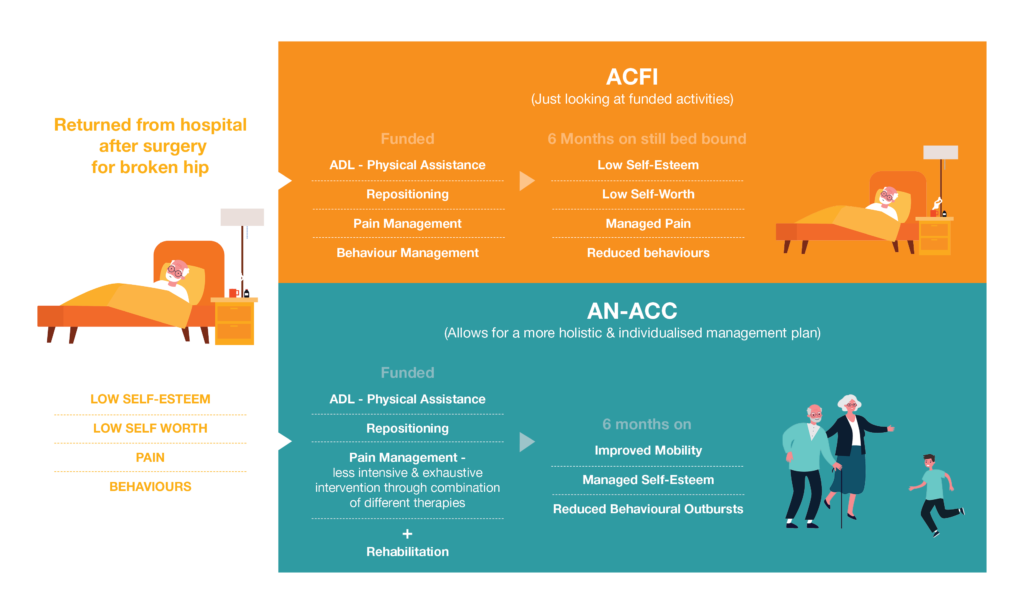How are all the areas of clinical care funded under AN-ACC?
One of the most different and (we think) positive things about AN-ACC is that while ACFI funds specific care activities, AN-ACC funds overall care burden.
Let’s explain: ACFI dictates how you should spend the funding i.e. 4bs. AN-ACC more says: ‘This is how much it should cost to care for your Resident with these care needs and how you spend it is up to you. This is because you are governed by the Accreditation Standards to meet the needs, goals and preferences of the Resident.
While ACFI funds for specific care activities, AN-ACC funds overall care burden. It is almost as if ACFI micro-manages how you spend your funding, while under AN-ACC how you should spend it is in line with clinical care and the standards. This gives us a great opportunity to rethink things. We’ll explore this more deeply in our Phase 1 AN-ACC Analysis Report.
This creates a wonderful opportunity to provide more tailored, funded care.
One of the most universal resource allocations that will be impacted is pain management. We will provide this analysis in a future report when it’s the right time to be planning for this change.
To join our AN-ACC Analysis Reporting series or to specifically request this AN-ACC Resource Allocation analysis report – call or email us 1300 419 119 team@providerassist.com.au
Case Study
Let’s consider a Resident that has returned from hospital after having surgery to repair a broken hip. On return, they are bed bound and in pain. This results in lowered self-esteem and self-worth, as well as behavioural outbursts due to pain and these internal feelings. In ACFI, we re-assess the Resident and identify that the Resident requires physical assistance with ADLs, repositioning and pain management as well as opiate analgesics and a relaxant as this is what we can be funded for. Over the next 6 months, the Resident’s pain has been managed and behaviour is reduced, but they have never regained the ability to walk and remain bed bound.
If we consider a more holistic and individualised management plan for the Resident, we can identify that the Resident would benefit from rehabilitation exercises in addition to pain management strategies. In this scenario, the Resident’s pain is managed with less intensive and exhaustive intervention through the combination of different therapies. The Resident has been able to achieve improved mobility, and they are able to walk with assistance from staff. This has improved the Resident’s self-esteem and reduced behavioural outbursts.
We can see from this example that allocation of funds to the individual Resident’s needs and goals allows for improved outcomes, often with less intensive intervention.


Author - Victoria Kelly
Managing Directo & Co-Owner